We were told we would be staying at a place called Trees for the Future, or something of the sort. Probably a cult-y little community up in the woods of Northern Wisconsin with eerie, half-there people who talk about how they have been “saved.” At least that is what we hoped.
Trees for Tomorrow was, to our disappointment, nothing like that. Alas, there was no charming cult leader, with questionable musical talent, strumming Kumbaya on his guitar out by the campfire and dishing out some “special” drink. Instead, we were at a children’s environmental education camp, with cute little deer roaming the grounds and cabins with adorable tree names.
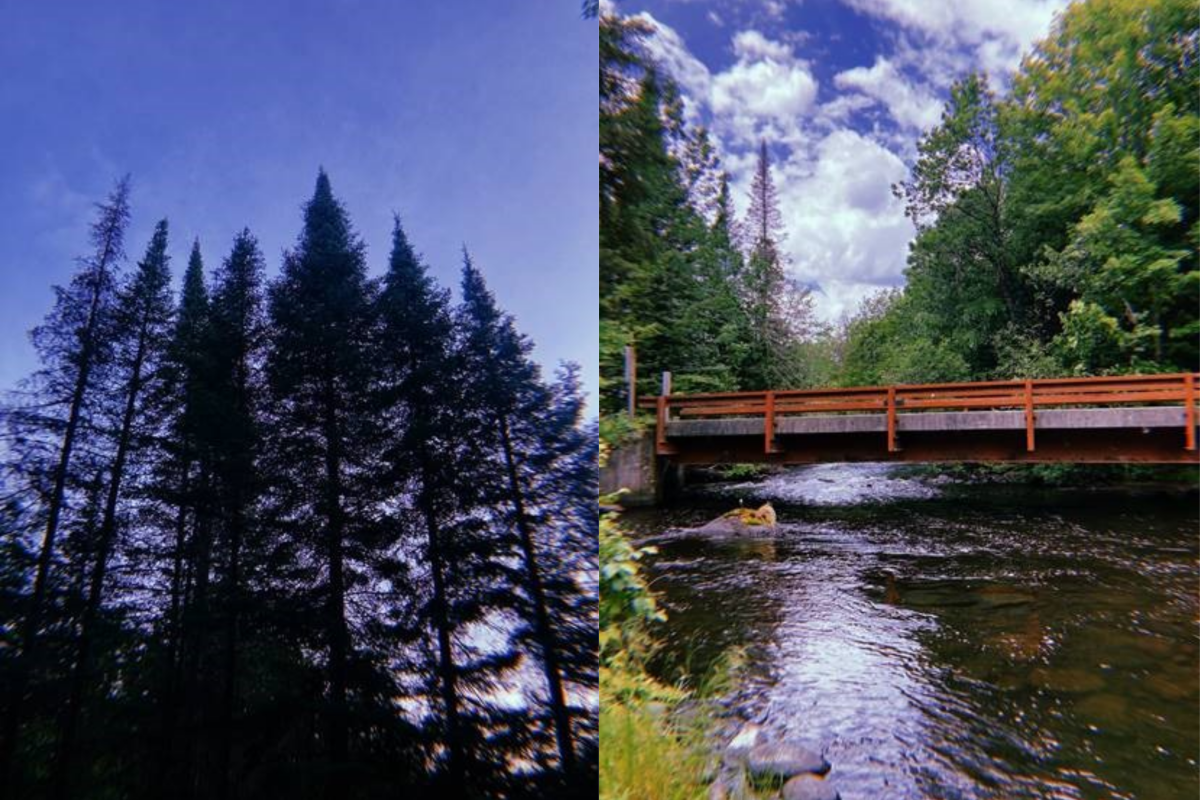

Evening shot of trees in Eagle River (Left). Bridge at a survey site (Right).
We were staying in the town of Eagle River, a tight-knit tourist town and the (alleged) snowmobile capital of the world. In the summer months, people from all over the Midwest flock here for the water sports, gorgeous nature, and the slowed-down pace of life “up north.” Trees for Tomorrow sat right on the river, with a big dock for relaxing and watching the boats go by in the evenings.
After getting settled into our cabin on Monday, we planned our condition survey sites for the day, spreading out our big forest service map on the bed of the Tacoma. Once we had our plan, we headed out, splitting up between the two trucks. Rock and I took the Ranger and Moss, Mud, and Zircon went out in Lil Taco.
Rock and I went to a big lakeside campground and recreation area bustling with campers and well-traveled RV folks. We measured out a lot of vault toilets and parking pads and shook a whole bunch of picnic tables, writing down everything that needed to be fixed up. Then we drove over to Big Joe Boating Site, a canoe launch site tucked away in a real dense thicket.
The roads out here are much less wide open than out in Minnesota. Here the trees creep out into the road, a flurry of tall, thin pines and scraggly oak and maple trees that soak up all the light and give you tunnel vision. Having grown up in Illinois, this was my childhood image of being in the woods. Classic, Midwestern nature. Driving down these roads, you feel elsewhere, but grounded just the same, a contradiction I’d eagerly embraced.
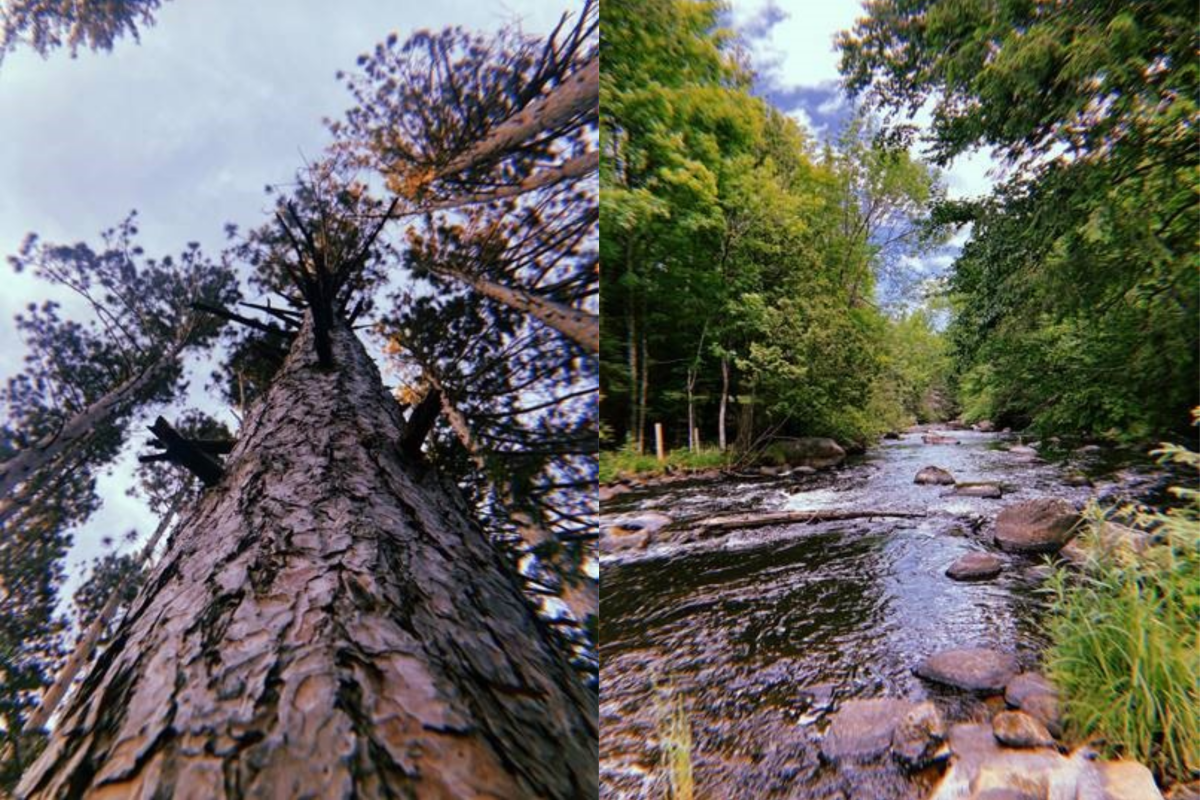

A pine tree near Trees for Tomorrow (Left). Peshtigo River, Chequamegon-Nicolet NF (Right).
We finished up with all the condition surveys and campground photos by Tuesday and then headed out with a Rec Tech (USFS Recreation Technician) named Sarah to do some brushing the next day. We trimmed out the parking areas and roads of a boating site first. This time, everyone got the chance to try out the brush saws, which cut up the lower overgrown weeds and grasses, and Mud and I worked with the pole saws, which get all of the high up branches. The boating site did not take too long to fix up and after that, we worked to widen out a picnic area and campground nearby. We finished the day there, getting Moss on the pole saw, too, and working together to cut down and clear away all of the brush.
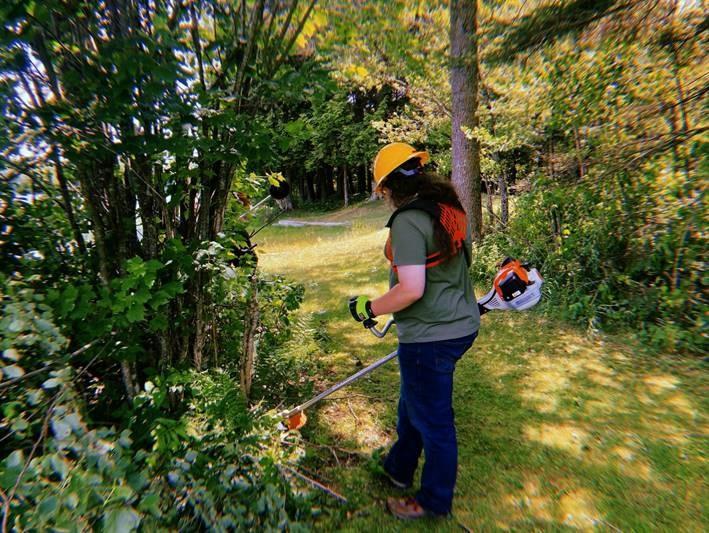

Rock using a brush saw.
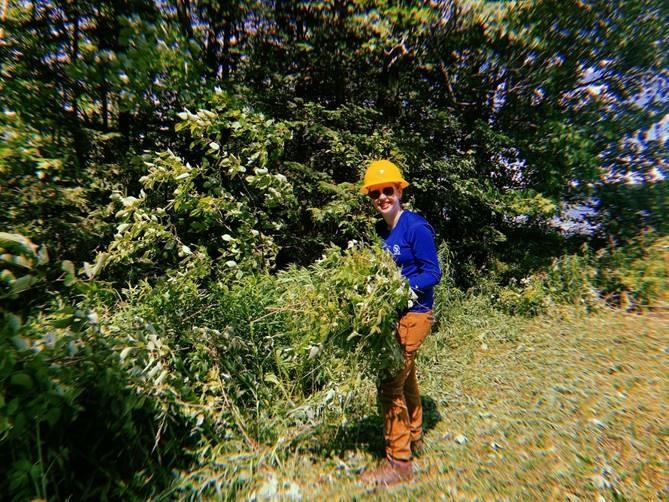

Zircon helping swamp.
In the evenings, after work and dinner and once the late summer sun set, Moss and I would head out to the water for a night swim. There was a real good swimming spot just a five minute walk away, with a big, inviting dock and ladders leading you into its perfect lukewarm waters. We swam there a couple nights and on the third night took a dip out in Eagle River, which we had not seen anyone swim in. The sky had finally turned pitch dark, sometime just after 11pm when we went down to the water. The river was just as impenetrable as the sky, its waters lurching forward and probably hiding all kinds of prehistoric critters. We took a long while to go in, watching the storm clouds that loomed in the distance. Eventually, though, we decided to stop being cowards and slid into the water, wading around uncomfortably. All sorts of slimy plants clung to our legs and each time we felt them we sped off through the water as if we were about to be swallowed up. After a while, our bodies relaxed and our care for river monsters dwindled allowing us to just be. The night turned peaceful.
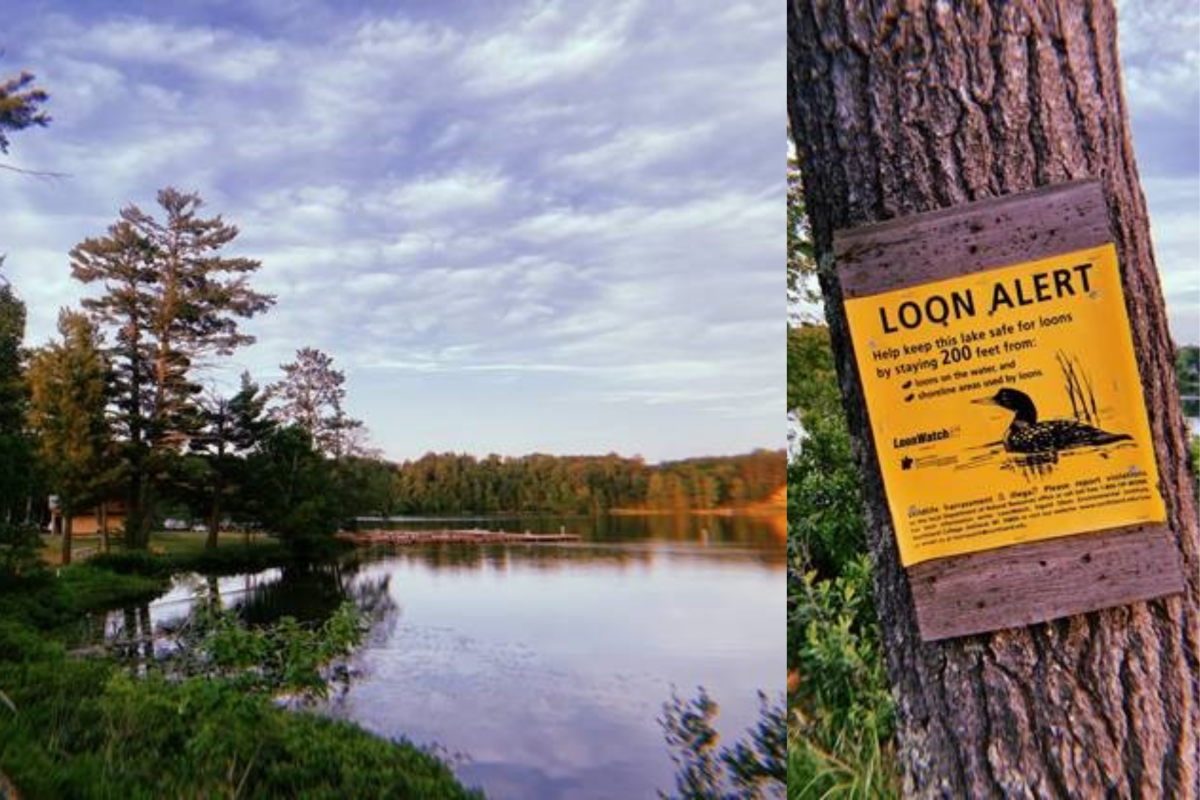

The swimming spot, Eagle River, WI.
On our last workday, we went out to the Florence Ranger Station to work with another group of Rec Techs who would be replacing picnic tables over at a dispersed campground just a short drive away. When we arrived, we loaded up two ATVs full of parts and wooden tabletops and then hiked into the sites while the Rec Techs drove the supplies in ahead of us. Attaching benches and tabletops, they quickly came together, while the Rec Techs worked to saw up and disassemble the old, rotted-away picnic tables. After we finished setting them all up, we rode back out on the ATVs, bumping, jostling, and narrowly avoiding puny fir trees and rocks, smiling so hard our faces hurt. We zipped through the dense hardwood forest, getting some of our last glimpses of Chequamegon-Nicolet.
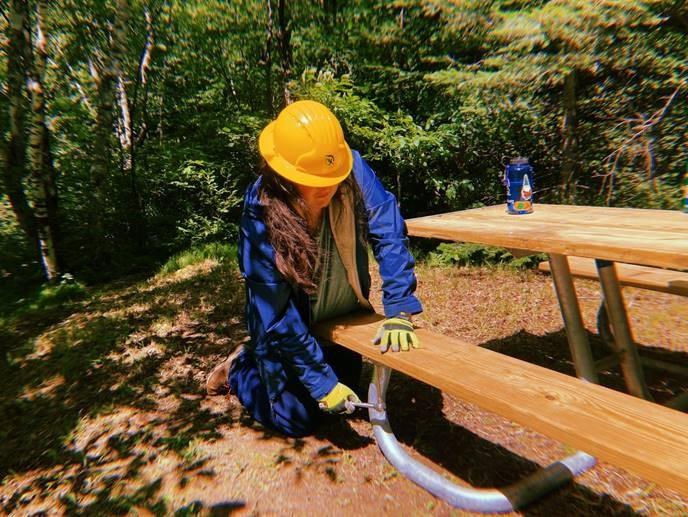

Rock tightening a bolt on a picnic table.
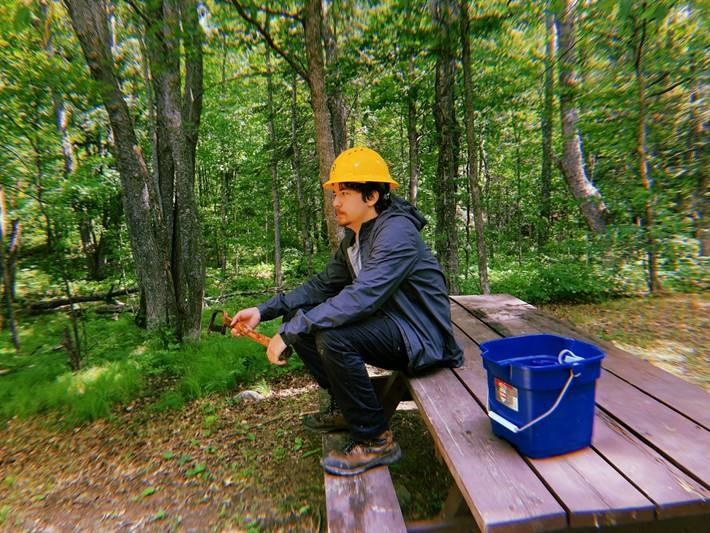

Mud hard at work.
Thursday afternoon, once we got back to Trees for Tomorrow, we packed up our supplies and enjoyed a free evening. Evenings out in the North are long. The sunlight stretches here, a remarkable abundance of seemingly endless days. Moss and I walked over to our swimming spot to read, chat and take a dip. We sprawled out on the big dock, watching all of the locals cannonball and splash around and listening to the constant hum of the grasshoppers and cicadas.
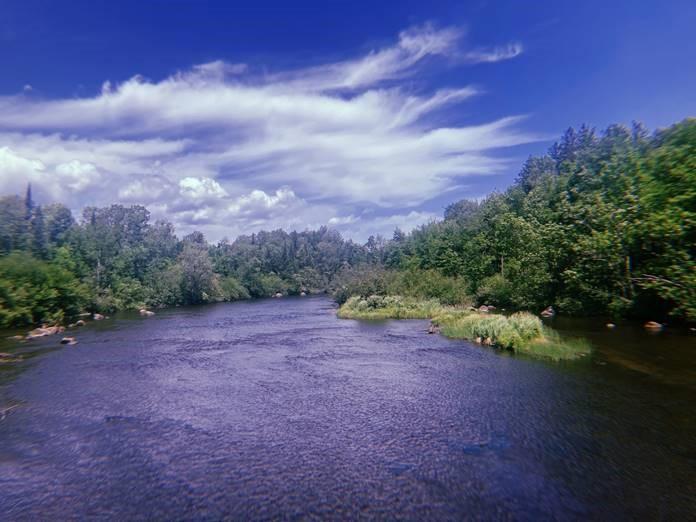

Eagle River, WI.
On Friday, we drove east to Michigan where we met up with our new project partner, Brenda, in Rapid River. Rapid River, on the southern end of Hiawatha National Forest, is a cute little town surrounded by pines, oaks, and cottonwoods, with a local ice cream stand right through it. The town sits on Little Bay de Noc of Lake Michigan and is home to one of the two Ranger District offices of the Western Division of Hiawatha National Forest.
The Western Division of Hiawatha stretches from the very north of Michigan’s land to where it hits Lake Superior, to the very South at Lake Michigan. During the next week we would be working this Western Division, bouncing between the Northern district of Munising and the Southern district of Rapid River (formerly the two districts of Rapid River and Manistique). For the week, we would be camping out near the Rapid River office, just out back of a USFS bunkhouse.
It was the Fourth of July weekend, so we headed an hour North to Pictured Rocks National Lakeshore, near the small, tourist town of Munising, MI.
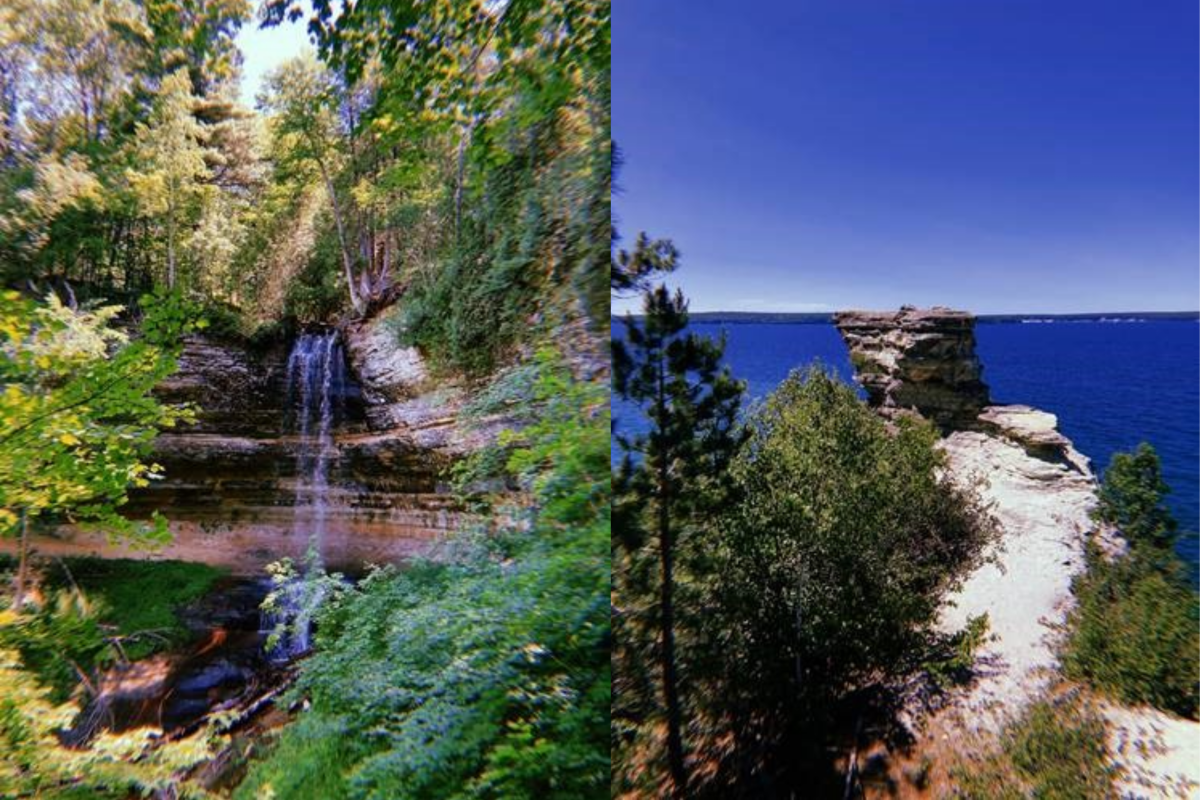

Munising Falls, Pictured Rocks Nat’l Lakeshore (Left). Miners Castle, Pictured Rocks Nat’l Lakeshore (Right).
We checked out Munising Falls first, a beautiful fifty-foot waterfall that is just a short walk from one of Pictured Rocks’ visitor centers. Then we drove toward another of Pictured Rocks main attractions, Miners Castle. Above this gorgeous, alien-looking rock formation, we looked out at the turquoise waters of Lake Superior where dozens of kayakers were out, paddling along the sandstone cliffs.
We hiked along the coast for a while, the smell of pines wafting out at us with the breeze. Everyone was out that day. Hikers and tourists clogged the footpaths and boats lulled by in short succession, a sea of admirers enjoying the summer air.
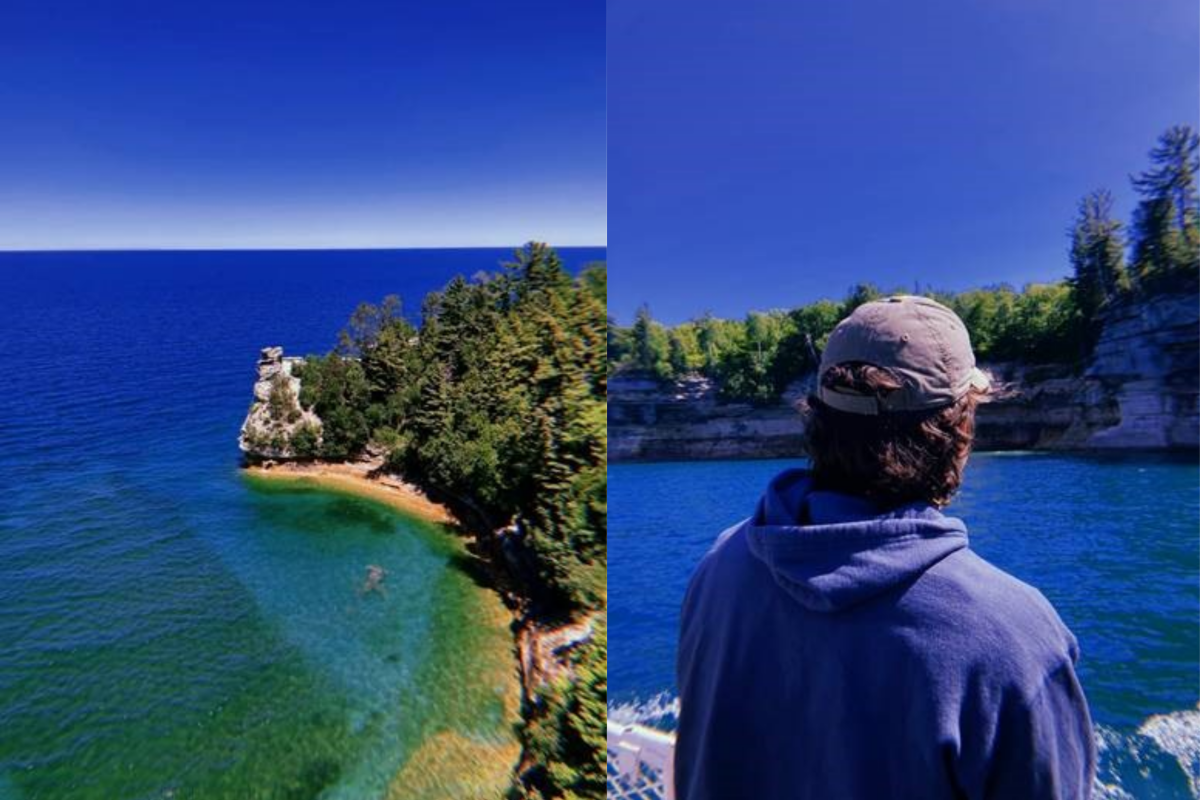

Another view of Miners Castle (Left). Mud admiring the cliffs (Right).
Later in the afternoon, we took a sightseeing boat out of Munising to see the Pictured Rocks from a different angle. Out on the deck we blasted through the water, leaving the little harbor and passing by Grand Island, and its spooky-looking wooden lighthouse, on our way to the cliffs. Spray flew up at us as we bobbed along checking out the rock formations and arches along the water. We passed by more kayakers and bathers along the beaches and watched as Bridalveil Falls dropped a thin stream of water down the colorful cliffs and into Superior.
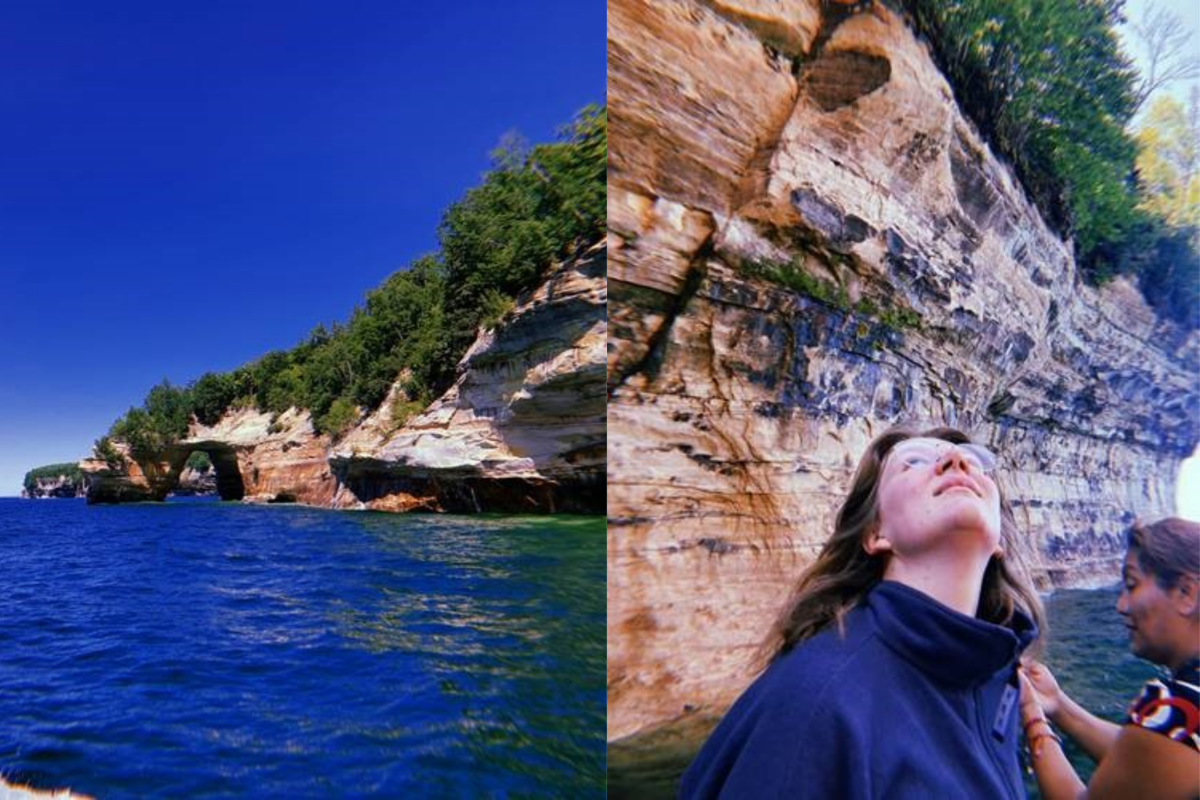

Arch along the boat tour (Left). Moss looking at the cliffs (Right).
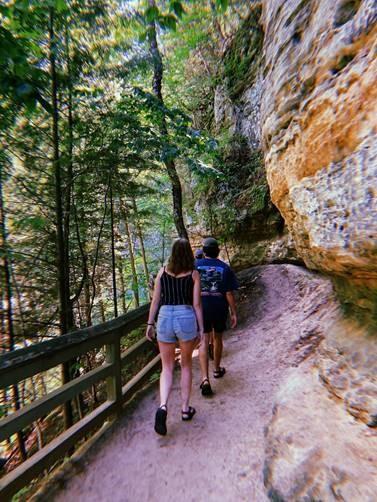

Mud and Moss walking toward Munising Falls.
The rest of the weekend was spent checking out the Fourth of July festivities and the beaches of Lake Michigan and Superior. We spent a couple nights out in the college town of Marquette wandering around, meeting new people and listening to the best 80s tribute band of all time and then on Monday we watched competitors fight it out at the US Log Rolling Open in Gladstone.
The four-day weekend felt like a lifetime, but eventually Tuesday came and we headed out into the forest once again to shake picnic tables and check out vault toilets.
Visit the Roving Resource Crew Series page for more entries.